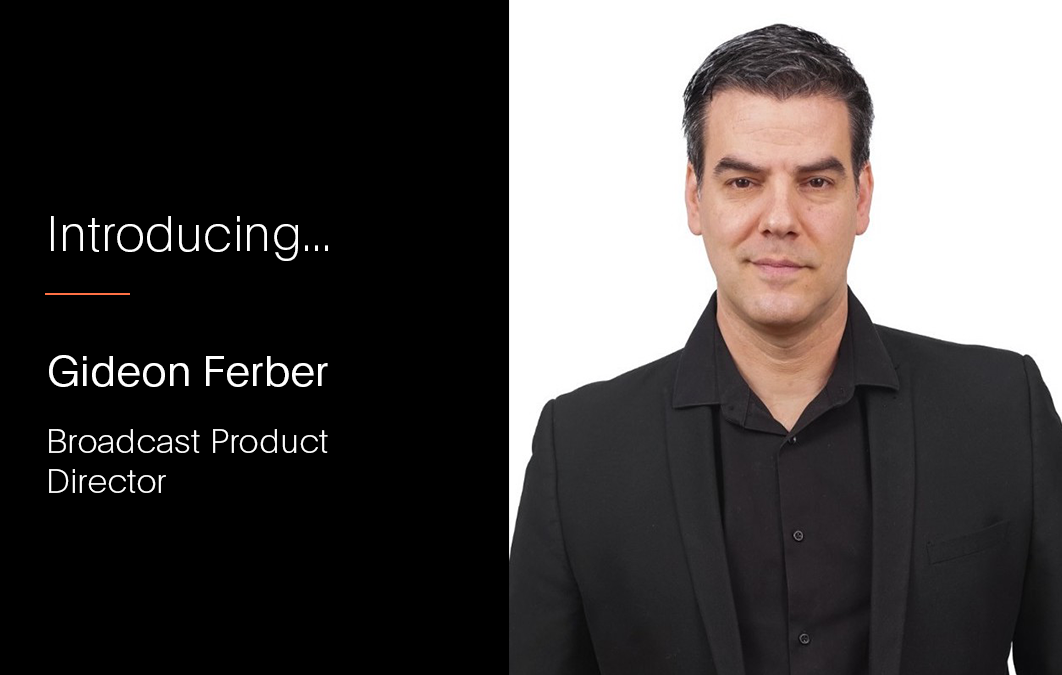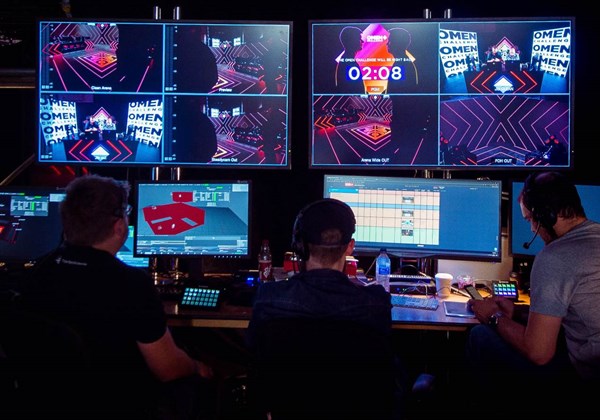
blog 2021 3 min read
Meet Gideon Ferber, disguise’s new Broadcast Product Director

Gideon Ferber recently joined disguise as Product Director for the Broadcast sector. From humble beginnings in graphic design, Gideon has over 14 years of broadcast industry experience working in product and business development roles for the likes of Orad and Ross Video. At disguise, Gideon is looking forward to working with extended reality and delivering solutions to power engaging broadcast productions with complex production workflows. Gideon shared some of his thoughts on his career, joining disguise and the future of the broadcast industry.
What drew you to disguise?
Whenever I came across disguise in my working experience, I always thought to myself, “this is ridiculously cool.” And the productions that disguise powers are nothing short of amazing. I definitely wanted to get involved. As it happened, I was on the hunt for my next challenge and disguise was the perfect fit. The intensity and excitement of starting from scratch and leading the way for new technology was exactly the challenge that I was looking for. At disguise we are running 1000 miles an hour and creating cutting-edge technology that is moving the industry forward.
You started your career in graphics design and ended up working in broadcast. What excites you about extended reality (xR)?
I have a warm place in my heart for graphics design, yet real-time 3D graphics is way more exciting than anything you can do in print. You can react immediately and change immediately. This is why xR is so exciting. It’s taking the same transition from print to CGI but to the next level. We don’t have to stand in front of a green screen and pretend what the scene will look like. It is so much more dynamic.
How do you think xR will impact the broadcast industry?
xR is here to stay. It offers too much to disappear. In the past year, we have seen xR being used in some major mainstream broadcasts like the coverage for the 2020 Olympics in Tokyo and the UEFA Euro 2020 Championships. Right now, global and nationwide broadcasters are adopting xR in their broadcasts. Regional stations may get on board afterwards. As components become cheaper, particularly the LED volume, more and more will adopt.
What are the biggest challenges when it comes to delivering graphics in broadcast at the moment?
The first challenge is usually around pipeline and workflows. There are many components in a traditional broadcast workflow that all need to be in sync and work seamlessly together. These include graphics engines, newsroom systems, studio automation and more. The second challenge is around data - how can producers acquire external data to feed into the production? This adds an extra layer of complexity.
The third challenge, and it is a major one, is talent and skill. Everyone wants to use graphics engines, like Unreal Engine, but you need to learn it first. How do you find the right people with the right expertise? Game designers know how to use Unreal but they don’t know broadcast. On the other hand, experienced broadcasters do not always have expertise in Unreal. These experts need to work together and educate each other. That’s why I’m excited about disguise and the innovations underway to address this which include disguise's free, eLearning platform.
Learn more about training at disguise
You have had quite the career journey, what is the best career advice you have ever received?
The best advice I ever received was never to wait and see if something will happen, rather make it happen yourself.
When you are not creating groundbreaking solutions for disguise, what do you like to do for fun?
I love reading fantasy and sci-fi novels, painting miniatures and I am a huge basketball fan. I also love heavy metal music. The best concert I have ever been to was a 1993 concert tour from Metallica in Israel.

